Avoid Surgery for Your Child - The Earwell Non Surgical Procedure is the safe and non-surgical procedure that can be the answer.
You may notice ear deformites very early on after the birth of your child. Naturally, this may be distressing to think that this could be an issue with your child as they grow older. Otoplasty can be done as early as 5-6 years of age which is crucial because this is the age right before children start to be conscious of their appearances. Otoplasty, or ear pinning, however requires large incisions around the ear and also having your child under general anesthesia. Both steps that can bring to your family more than desired levels of risk. You may be able to avoid surgery with the Earwell procedure which is the application of silicone molds that can shape your childs ears in about 5-6 weeks.
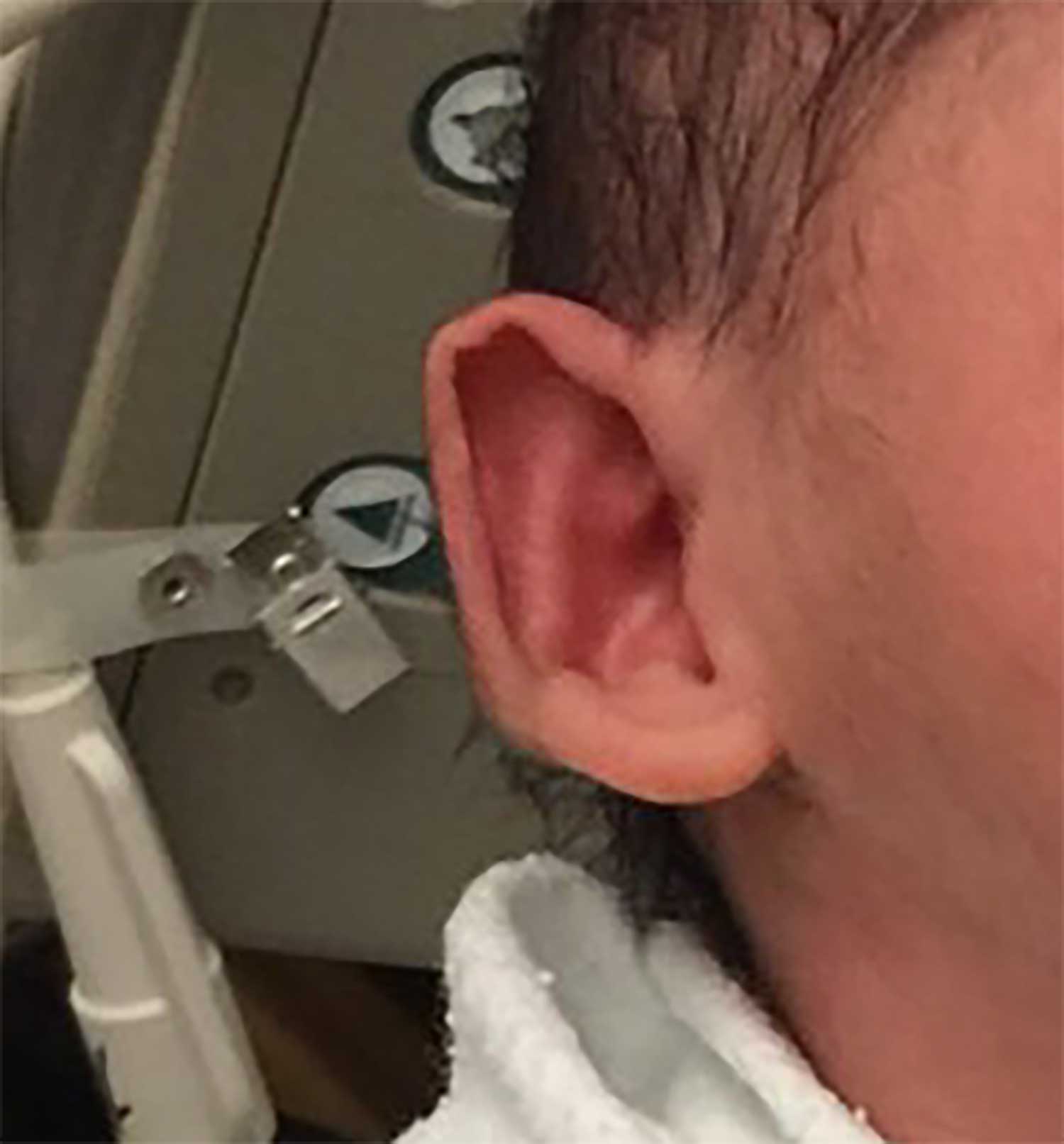
Before Earwell Non-Surgical Molding of Congenitally Deformed Ears in a 1 month old baby.
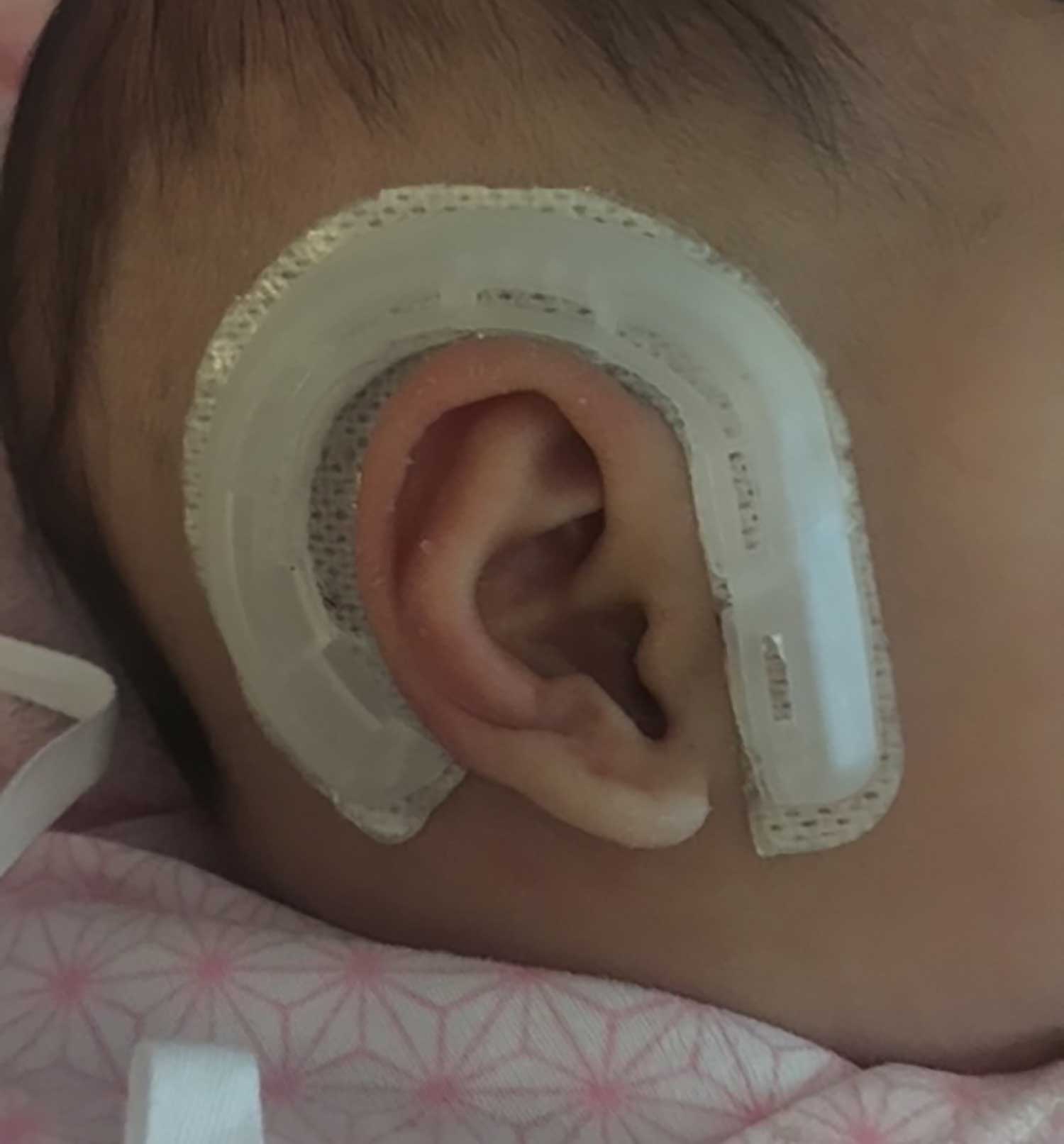
After Earwell Non-Surgical Molding of Congenitally Deformed Ears in a 1 month old baby. Here we show where the mold sits to understand how this will be applied to your babies ears.
"Hi Dr. Young, Just to let you know everything is fine, no problems. I am so happy with my ears!! Your skill is awesome!!! Thank you so much."— J.H. 50's caucasian female from Western Washington
Microtia is a congenital deformity that involves an ear that is missing parts of a normal ear. It is graded into 4 major types. Microtia reconstruction is a procedure where these parts or the entire ear is repaired and made to look as close to normal as possible. The two main approaches involves using someone's own rib or ear cartilage or implants made up of porous polyethylene or Medpor. Microtia can be done at a very early age (as early as five when the ears reach near adult size and shape).
Torn earlobes is a common condition that happens usually when someone is wearing an earring and it is forcefully pulled out. There are many ways to repair this but the most effective way our doctors have found is to close the hole and then repierce it at a later date. You can often re-pierce the ears in three to six months. The longer you wait the better it will resist reoccurance. There are more complicated ways to fix torn earlobes but most of those options are less than optimal than simply closing it and repiercing it. This surgery is often done under local anesthesia but we can incorporate plastic surgery anesthesia of some type.
"Hi Dr. Young, Just to let you know everything is fine, no problems. I am so happy with my ears!! Your skill is awesome!!! Thank you so much."— J.H. 50's caucasian female from Western Washington
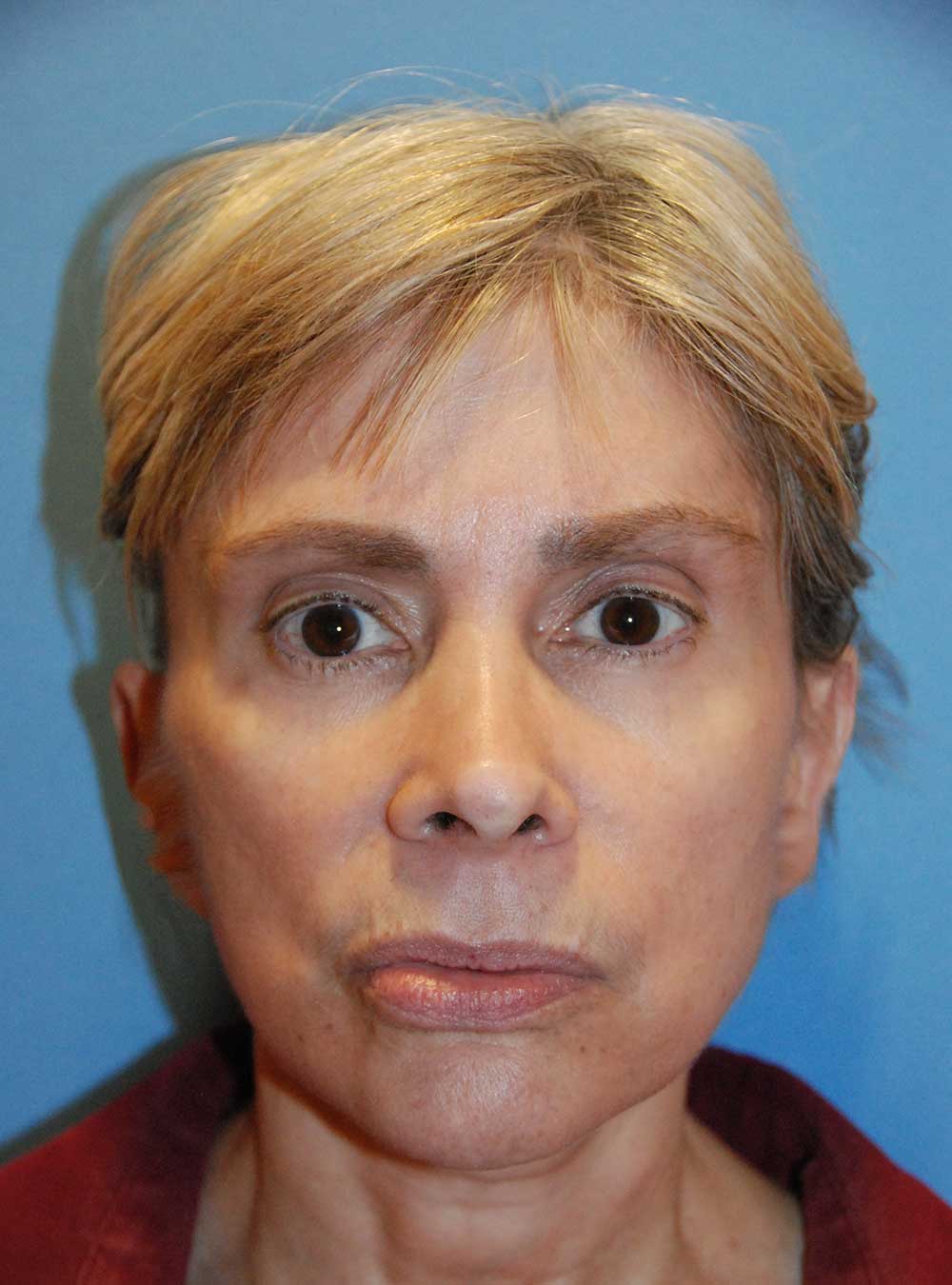
Before Otoplasty Revision for Flat Ears and Ears that are too Pinned Back. Before and After Superficial Temporal Parietal Fascial Rotation Flap, Full Thickness Skin Graft from hip sides, Mastoid fascial graft, Medpor Graft, Ear Cartilage Grafts, Release of Scar Contracture, Reversal of Mustarde Sutures, Reversal of Conchal Setback
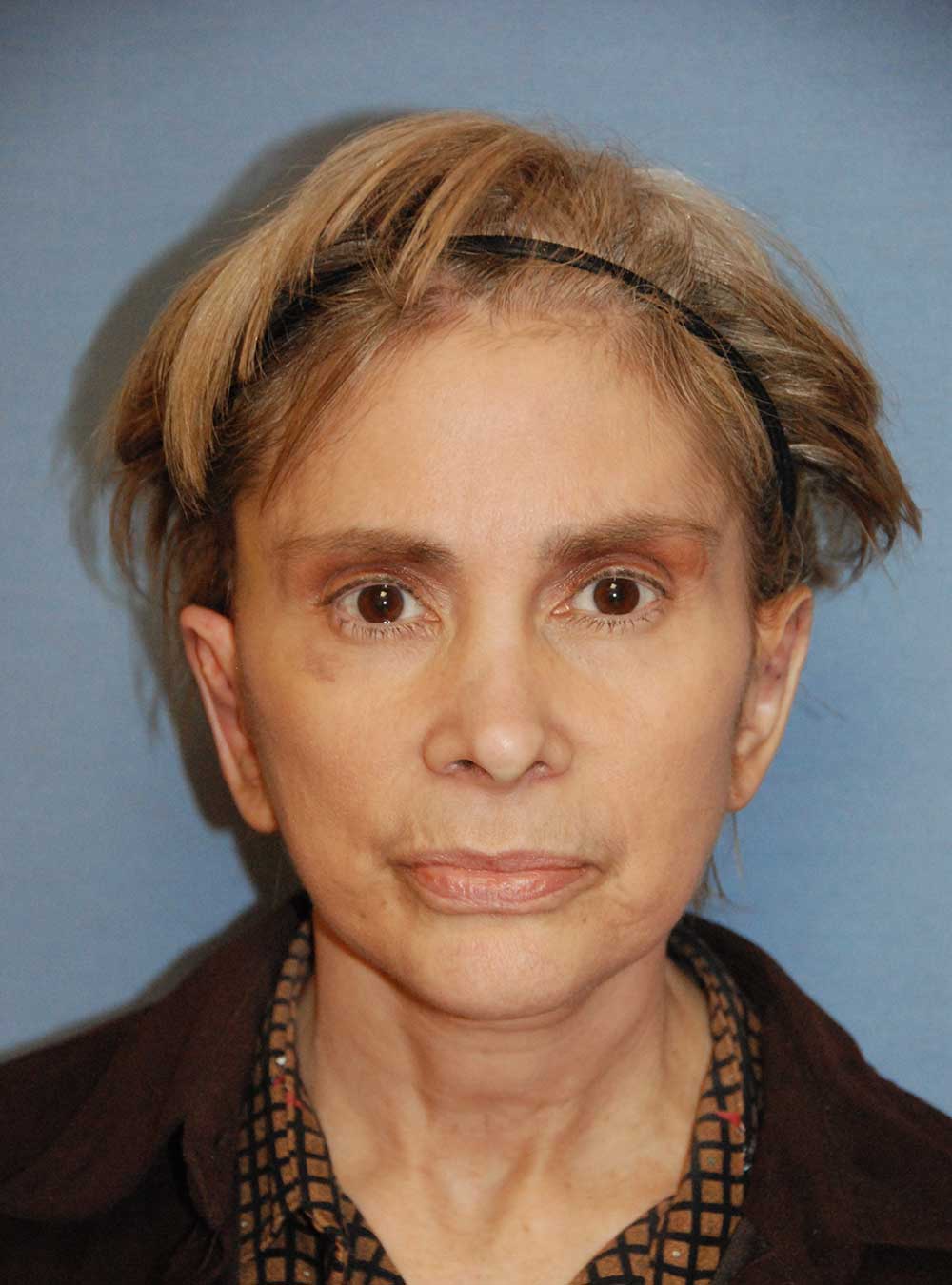
After Otoplasty Revision for Flat Ears and Ears that are too Pinned Back. Before and After Superficial Temporal Parietal Fascial Rotation Flap, Full Thickness Skin Graft from hip sides, Mastoid fascial graft, Medpor Graft, Ear Cartilage Grafts, Release of Scar Contracture, Reversal of Mustarde Sutures, Reversal of Conchal Setback
Note: Individual results will vary. Images do not constitute a promise or representation of any particular outcome or experience.
Watch Dr. Young's Congenital Ear Anomaly Reconstruction
The correction and reconstruction of gauged and stretched earlobes often require flaps of tissue that are rearranged to recreate normal looking earlobes. Re-piercing of the earlobes can occur three to six months depending on the healing but is always encouraged to be done later. The more you wait the better the strength of the earlobes will become.
Prominent ears, or ears that are more outwardly protruding, require treatment of the base or concha of the ears (the base portion right next to your ear canal) and reshaping of the anti-helix of the superior part of the ear (the inner roll or mound that is just inside the rim / edge of the outside of the ear. Other techniques can be used to medialize or bring the earlobes and superior base of the ear closer to the head. Most incisions are placed behind your ears. The earliest age considered for the procedure is age five.
Otoplasty revision and the correction of otoplasties done before are more difficult. They require the knowledge of all aspects of otoplasty in order to achieve the best success. Dr Young is an expert in otoplasty revision having published a chapter on this subject in a major plastic surgery textbook on Otoplasty Revision Book Chapter.
Knowledge of otoplasty revisions is crucial in avoiding future problems. Overcorrection can lead to ears that are too close to the head or bent to far which causes them to look abnormal. The overcorrected ear can be very difficult to change and treat. That’s why doing it right the first time is really important. Dr. Young's has written 5 peer reviewed journal articles on beauty which gives him the greatest advantage in getting you the best results.Click here to learn more about his award winning theory on beauty.
Most all of surgery done for otoplasty is done through an incisions in the back of the ear. Scarring is typically not a major issue for patients. The ears are pinned back at the base of the ear to allow it to come closer to your head. Prominent ears or protruding ears can be due to a lack of bend in the antihelix. If this is the case, we also create this bend in the antihelix and cartilage. To create this shaping we use sutures to carefully create the right appearance.
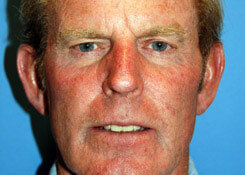
Ear Plastic Surgery using Concha Reduction and Mustarde Sutures Before
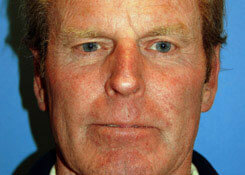
Ear Plastic Surgery using Concha Reduction and Mustarde Sutures After
Note: Individual results will vary. Images do not constitute a promise or representation of any particular outcome or experience.
Dr. Philip Young has published a chapter on revision otoplasty and has also developed a new theory on beauty called the circles of prominence. A multitude of studies have shown that beautiful people are perceived to be more competent, likable and trustworthy. See all the benefits of beauty.
Dr. Young won the Sir Harold Delf Gillies Award for his revolutionary theory on beauty from the American Academy of Facial Plastic and Reconstructive Surgery. He is an expert in otoplasty/ear plastic surgery, and he has helped reshape large / Macrotia, deformed or protruding ears (sometimes referred to Dumbo Ears) and has produced dramatic aesthetic results. Dr. Young has more than 20 years of experience as a surgeon and has been published in multiple peer reviewed articles and chapters in textbooks.
Note: Individual results will vary. Images do not constitute a promise or representation of any particular outcome or experience.
